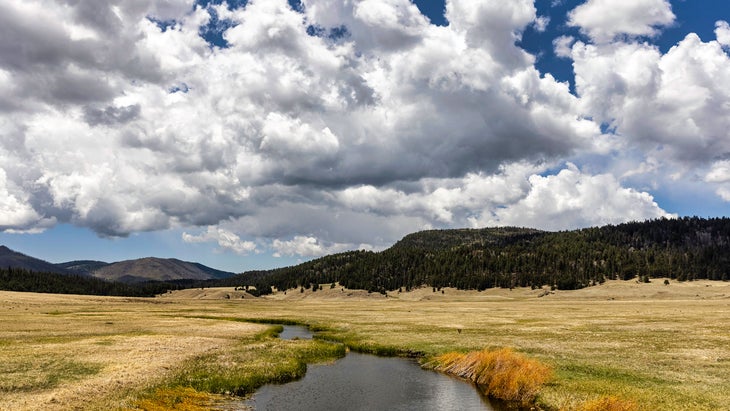Products You May Like
Get full access to Outside Learn, our online education hub featuring in-depth fitness, nutrition, and adventure courses and more than 2,000 instructional videos when you sign up for Outside+
Sign up for Outside+ today.
Read more: The Outdoors’ Most Spectacular Natural Phenomena, Explained
Hike into Valles Caldera today, and you’d never guess that this sunken oval of ponderosa forests and trout streams 40 miles northwest of Santa Fe was the epicenter of a cataclysmic explosion. But 1.25 million years ago, a sudden and massive eruption created not only this 14-mile wide crater, but also the orange-rock landscape of northern New Mexico. Numerous hot springs in the area indicate that Valles Caldera is dormant, not extinct—which is all the more reason to get to know this geothermal gem before she blows again.
The Basics of Valles Caldera
Hot Rocks
Valles Caldera’s volcanic history is a consequence of its location above two intersecting cracks in the Earth’s crust: the north-south Rio Grande Rift, and the Jemez Lineament, an east-west crease of weakened crust. These deep fissures enable magma to rise close to the surface.
Big Blast
Exploding with 100 times the force of Mt. St. Helens, the volcano that became Valles Caldera ejected a fiery cloud of ash, steam, and gases. While some particles drifted as far as Iowa, most debris poured out like a giant pancake, burying hundreds of square miles under ash as thick as 3,000 feet. Over several decades, the cooling ash welded into a rock layer now known as the upper Bandelier Tuff.

Rising Anew
Over time, fresh magma pushed up the caldera floor to create new volcanic domes, including Redondo Peak, which today rises 3,000 feet above the valley. The cycle of eruption, collapse, and rebirth makes this volcano a resurgent caldera, similar to others in Yellowstone National Park and California’s Long Valley.
